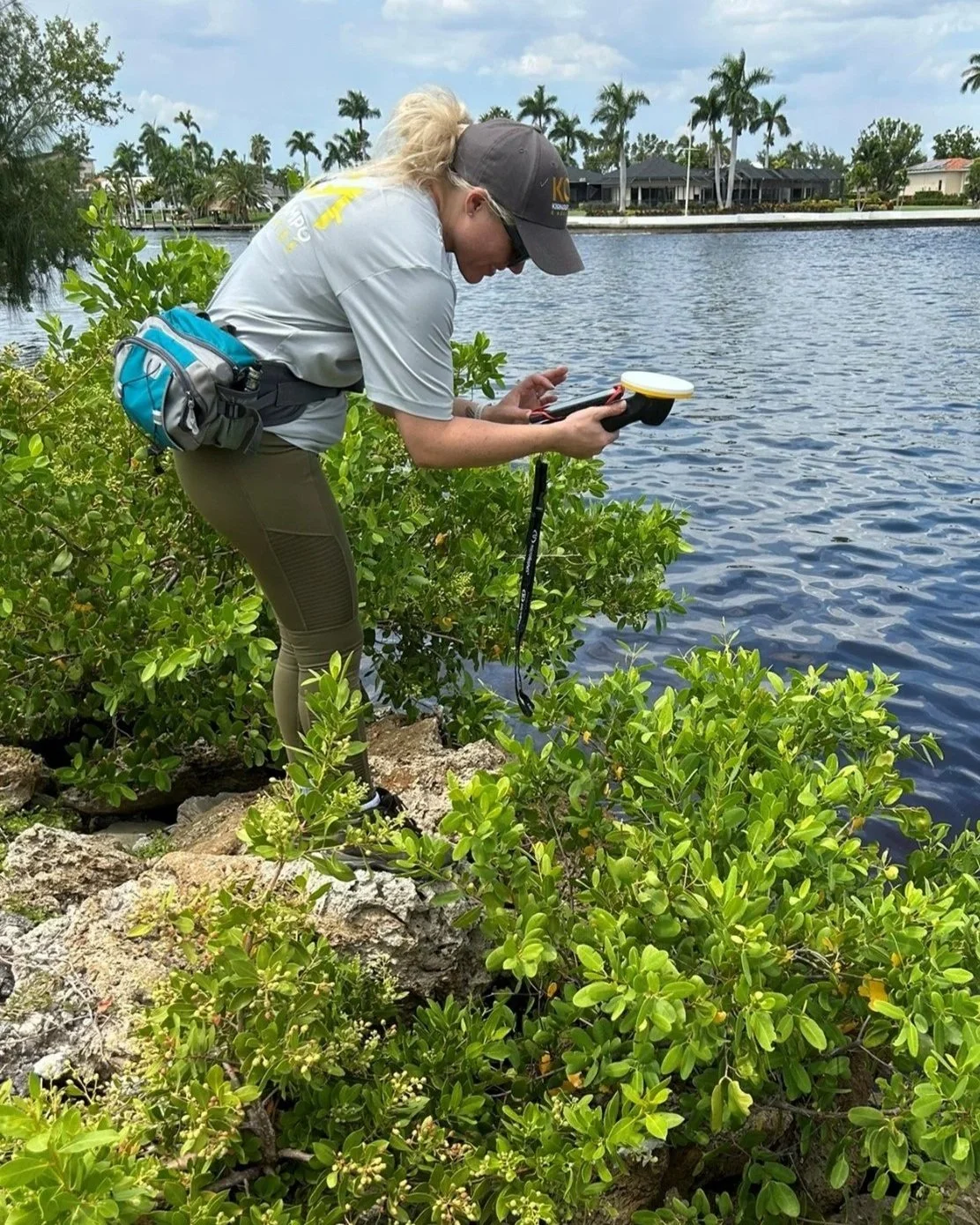
Environmental
Lee County is honored to be home to a diverse range of species and the vital habitats they depend on. We remain committed to protecting these valuable natural resources for current and future generations.
Senior Environmental Scientist, Catie Neal, collecting GPS data for the jurisdictional determination of the mangrove wetland limits.
Wetlands and Surface Waters
The Cape Coral Bridge project area was evaluated for coastal habitats, specifically wetlands and surface waters, and for the species with the potential to occur within the project area. Habitats within the project area include mostly transportation, parks and recreation, and wetland and surface water resources including mangroves and the open waters of the Caloosahatchee River.
Lee County has taken all actions to minimize the destruction, loss, or degradation of wetlands, and to preserve and enhance the natural and beneficial values of wetlands within the project area. To ensure the safety and functionality of the new bridge, expansion of hardening structures along the eastern and western bridge approaches will be necessary. Unavoidable impacts to wetlands will be mitigated to achieve no net loss of wetland function.
Seagrass is an imperative habitat to many marine mammals and fish within Florida. In-water seagrass surveys conducted by project biologist have confirmed that seagrass beds will not be impacted by the bridge replacement.
Drone view of seagrass surveys and quadrat with environmental scientists for seagrass surveys for the Cape Coral Bridge Replacement project.
Environmental scientists completing seagrass surveys for the Cape Coral Bridge Replacement project.
Resident Florida burrowing owl pair located in Bernice Braden Park.
Protected Species
The project area has several federal and state protected species with the potential for occurrence. Listed species are afforded special protective status by federal and state agencies. This special protection is federally administered by the U.S. Fish and Wildlife Service (USFWS) and the National Marine Fisheries Service (NMFS) pursuant to the Endangered Species Act (ESA). The Florida Fish and Wildlife Conservation Commission (FWC) affords special protection to animal species designated as state-designated threatened or state species of special concern, pursuant to Chapter 68A-27, F.A.C. The state of Florida also protects and regulates plant species designated as endangered, threatened or commercially exploited as identified on the Regulated Plant Index (5B-40.0055, F.A.C.), which is administered by the Florida Department of Agriculture and Consumer Services (FDACS), Division of Plant Industry.
The Bernice Braden Park adjacent to the Commerce Building is home to a Florida burrowing owl pair that has been monitored by the County for several years. The FWC Florida Burrowing Owl Species Conservation Measures and Permitting Guidelines will be closely adhered to during construction to avoid any adverse impacts to this species.
The Caloosahatchee River is critical habitat to the federally protected smalltooth sawfish. Although this species has not been observed by project biologist, several conservation measures during construction have been implemented to avoid any adverse impacts to this species, including specialized timing for in-water activities, particularly during breeding season.
Several Florida bats create roosts within the cracks and joints of bridges in Florida, including the federally protected Florida bonneted bat and tricolored bat. Bats utilize open waters for foraging, emerging at dusk and returning at dawn. Bridge roosts also provide valuable protection for bat during maternity season when pups are most vulnerable. A full survey inspection of the Cape Coral bridge did not detect any roosting bats. Additionally, full acoustic surveys of the project corridor were also conducted to ensure that nearby vegetation that could provide other roosting habitat would not be affected. Because roosts can develop over time, several conservation measures during construction will be implemented to ensure that bat roosts will not be impacted during the bridge replacement.
The Caloosahatchee River is also critical habitat for the West Indian manatee. Manatees have been observed swimming through the project area by project biologists. Although adverse impacts to habitat are not proposed, several conservation measures will be implemented during construction to avoid any secondary impacts to this species.
Example image of a smalltooth sawfish
GIS Analyst, Abe Senerchia, assisting with the bat roosting surveys under the superstructure of the existing Cape Coral Bridge.






